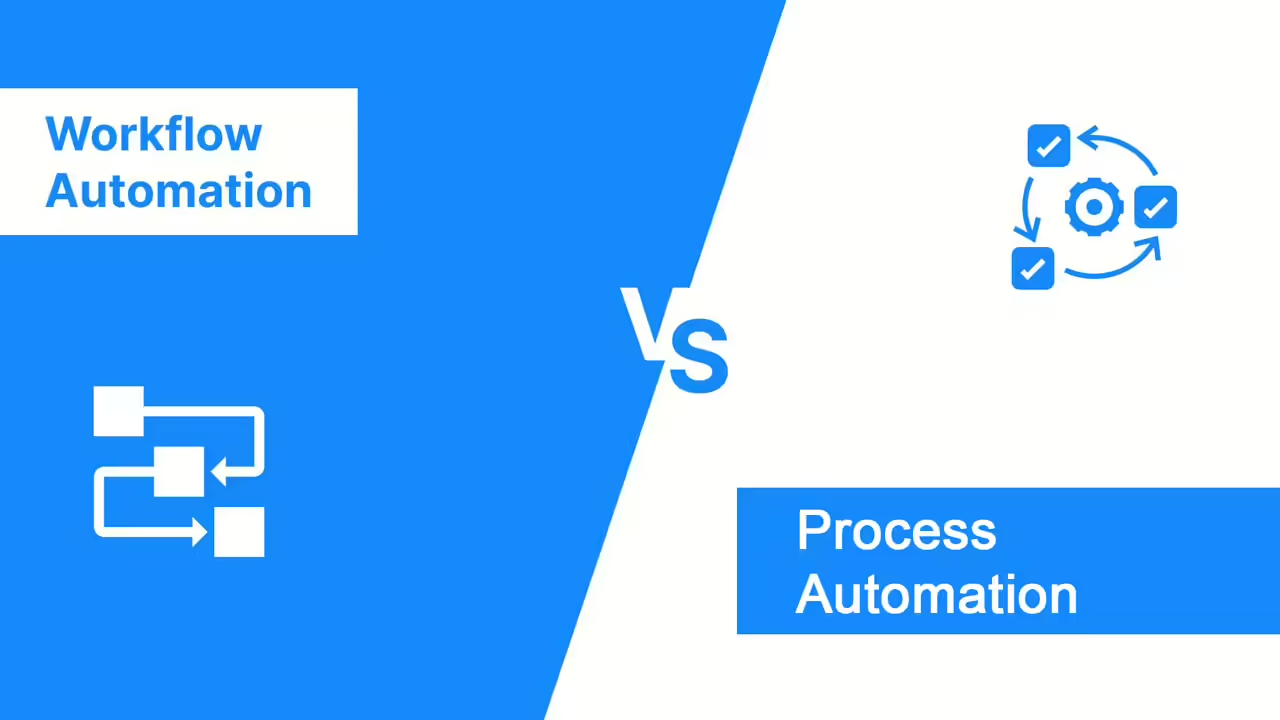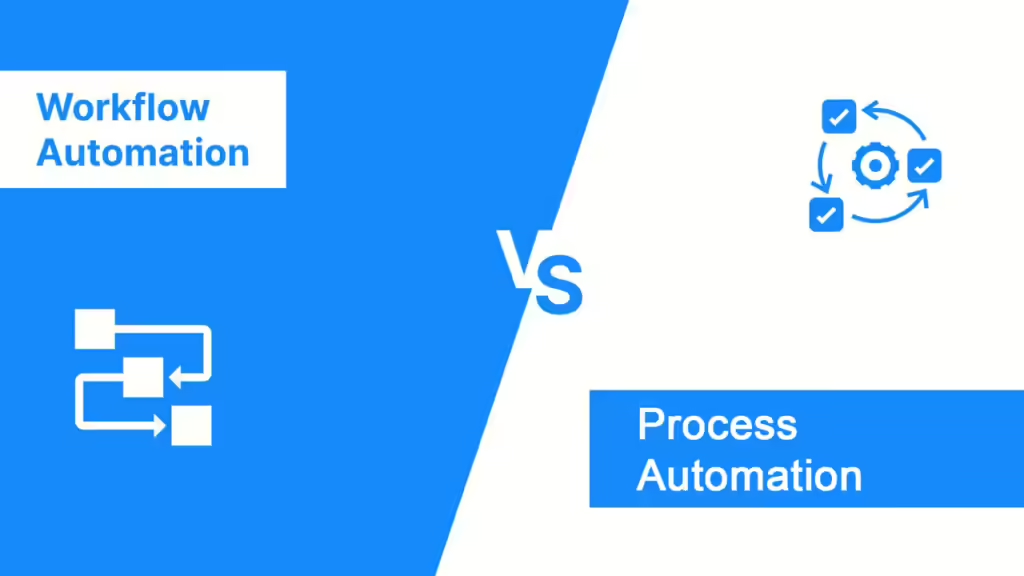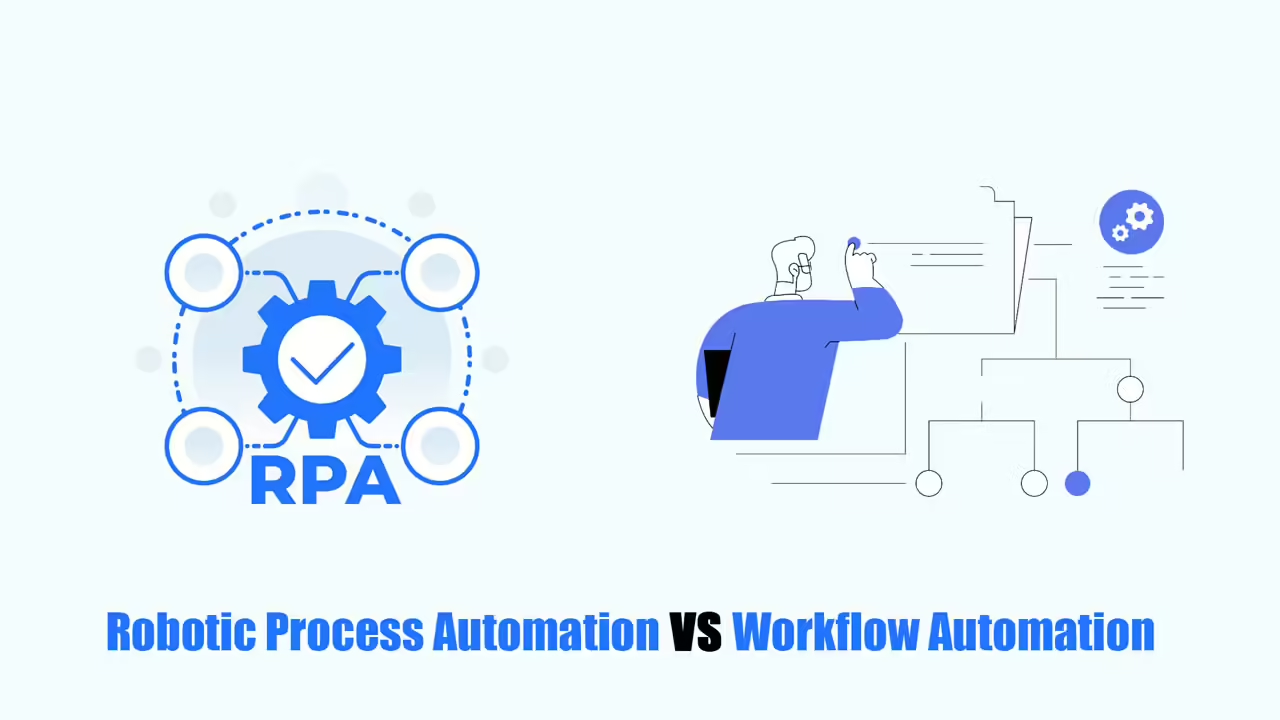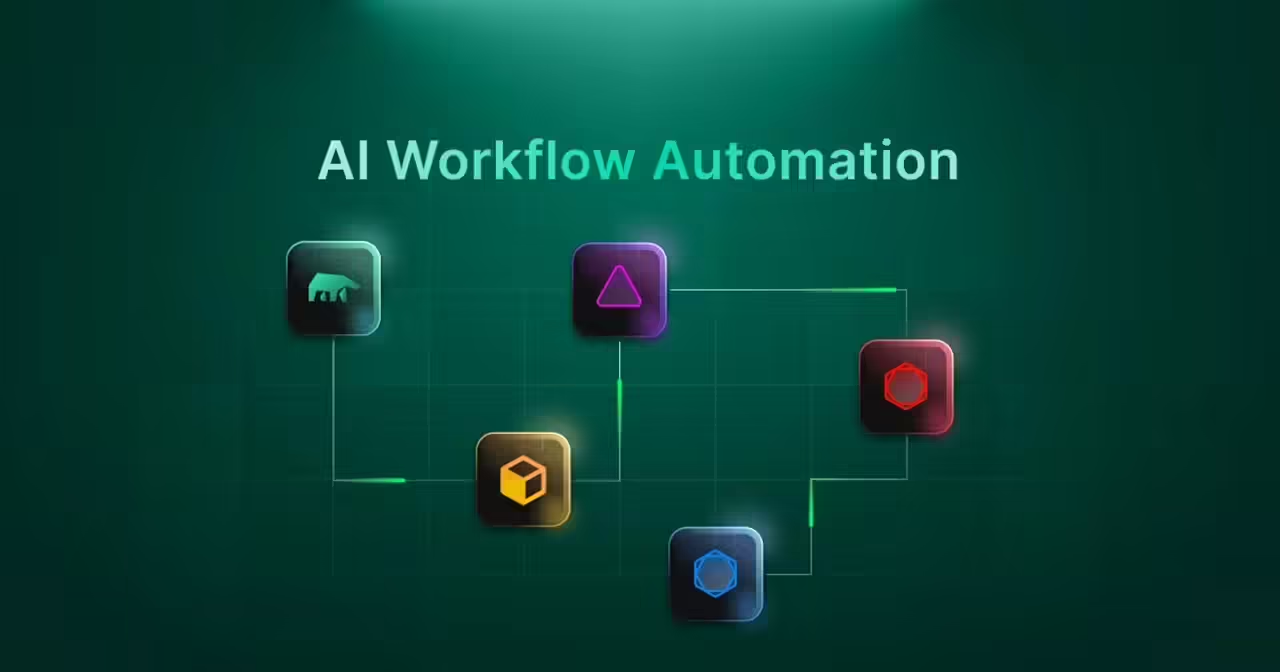For a business to function well, it needs to make work easier, reduce manual work, and improve productivity. That’s why many businesses have been looking to automation which can help companies solve many different problems.
Among them, there are two types of automation that are often used together but serve different goals: workflow automation vs process automation. Besides some common points, we, as well as businesses, need to understand the differences between them so we can use them and coordinate them effectively with business activities.

Let’s explore them!
What is Workflow Automation?
Workflow automation means setting steps, tasks or activities to complete a specific job or achieve a given goal. It shows what needs to be done, when, and who is responsible for each task. In other words, a workflow is like a map that shows the entire process, including every decision that needs to be made or approval that needs to be given.
Essentially, a workflow is a set of rules and steps that guide how work is done within a company. It helps tasks get done in the same way and helps reduce unnecessary errors and delays. Workflows can be used in many areas of business, such as project management, document approval, and customer help.
Workflow Automation Benefits:
Here are some big advantages of using workflow automation:
- Get More Done Faster: Workflow automation takes away tasks you have to do by hand and makes processes smoother, saving time and effort on boring activities. This lets workers focus on more important things, leading to better productivity and results.
- Make Fewer Mistakes: Automation reduces the chance of human error that happens in manual processes. With automation, mistakes in entering data, oversights, and inconsistencies are much less likely, leading to better and more reliable results.
- Work Better Together: Automating workflows enables team members to work and communicate more conveniently and easily. Here, everyone has access to tasks, documents, and project status. From there, members can easily track progress, share the latest information, and work together in real time.
- Faster Turnaround Times: By eliminating bottlenecks and delays, automated workflows help speed up the completion of tasks. Especially with pre-installed workflows and automatic notifications, tasks will be moved quickly in the system with shorter processing times, thereby improving efficiency.
What is Process Automation?
Process automation means using technology to automate repetitive tasks instead of doing them manually and make complex business processes simpler. It uses software and tools to perform tasks automatically, minimizing human involvement, especially minimizing errors.
The goal of process automation is to make business operations more efficient by automating repetitive daily tasks, reducing time and resources. From there, it helps companies standardize processes, comply with rules, and get more done overall.
Process Automation Benefits:
Like workflow automation, process automation offers some advantages that can change the way businesses work and make them more efficient. Here are four key benefits of process automation:
- Better customer experience: Process automation helps businesses respond faster and have more personal interactions with customers. By automating things like processing orders, handling support tickets, and delivering services, companies can make customers happier and keep them coming back. Automation also helps gather useful information about customers so companies can tailor their products and services to better meet customer needs.
- Smarter decision-making: Process automation gives companies helpful information and insights to make better business decisions. By collecting and looking at data from automated processes, businesses can find trends, patterns, and areas to improve. Automation lets decision-makers make informed choices based on real-time data, market trends, and performance numbers, leading to continuous improvement and a competitive advantage.
- Save money: Process automation cuts down on costs related to manual labor, mistakes, and inefficiencies. By automating repetitive tasks, companies can lower labor costs, reduce the need for people to do things manually, and use resources better. Automation also helps avoid costly mistakes, rework, and problems with following rules, leading to significant savings over time. By using resources for more valuable activities, businesses can be more efficient and profitable, making the most of their investment in automation.
- More accurate and consistent: Automation reduces the risk of human error by making sure tasks are done the same way every time and according to set rules. By eliminating manual data entry and processing errors, process automation makes data more accurate and reliable, so companies can make better decisions.
Main Differences: Workflow Automation vs Process Automation

Although workflow automation vs process automation are similar, they serve different roles in how a business runs. Here’s a summary of the main differences:
Scope
Workflow automation: Focuses on the order of tasks in a specific process.
Process automation: Covers the wider idea of using technology to automate tasks and processes.
Execution
Workflow automation: Shows the manual and automatic steps in a process.
Process automation: Uses computers to do the tasks in the workflow, reducing manual work.
Flexibility
Workflow automation: Can be changed to fit different processes and adapt to new needs.
Process automation: Offers flexibility and can grow with your business by automating repetitive tasks and improving processes.
Integration
Workflow automation: Can be connected with other tools and apps to make data sharing and information flow smoother.
Process automation: Connects with existing tools and technology to automate whole business processes and make work more efficient.
Scalability
Workflow automation: Often used for smaller teams or departments, where workflows are simpler.
Process automation: Can handle large-scale needs of bigger companies and complex processes that involve many teams and systems.
Customization
Workflow automation: Has limited options to change things, usually just adjusting pre-made templates.
Process automation: Offers lots of ways to customize, allowing companies to tailor automation to their specific needs, including custom logic, rules, and integrations.
How Can Workflow Automation and Process Automation Work Together?
Workflow automation focuses on making small tasks easier, while process automation looks at the big picture, organizing how work flows across different tasks and systems. Workflow automation vs process automation work best together, like building blocks and the whole structure.
Workflow automation is the base for process automation, setting the stage for how the whole process is built and automated. By making individual tasks automatic, companies can create standard procedures, improve teamwork, and find ways to make things better through bigger process automation projects.
Process automation makes workflow automation even better by connecting different workflows and systems throughout the company. It ensures that information moves smoothly between different tools and teams, minimizing manual work, and making the whole process flow better.
Read more:












